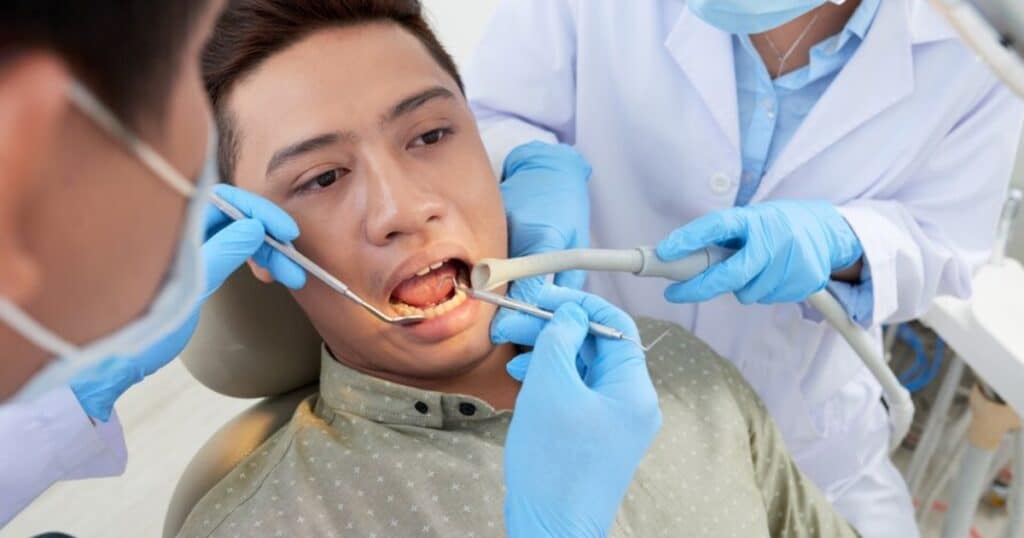Undergoing a tooth extraction can be a daunting experience, but with the right pain management strategies, the process can be much more comfortable. In this comprehensive guide, we’ll delve into effective ways to manage pain during and after tooth extraction in Carthage, ensuring a smooth and pain-free recovery.
Understanding Tooth Extraction
Tooth extraction is a common dental procedure performed for various reasons, including severe decay, infection, or crowding. While the idea of having a tooth removed might cause anxiety, advancements in dentistry, coupled with proper pain management, can make the experience less intimidating.
The initial step in pain management during a tooth extraction is the administration of a local anesthetic. This numbs the area around the tooth, ensuring you won’t feel pain during the extraction process. While the initial injection may cause slight discomfort, the numbness sets in quickly, facilitating a relatively painless procedure.
Effective communication with your dentist is also crucial. Share any concerns or fears you may have about the procedure, allowing the dentist to tailor their approach to ensure your comfort and understanding throughout the process. For those with heightened anxiety, conscious sedation may be an option. This involves the use of medication to induce a state of relaxation during the procedure, helping alleviate anxiety and minimize discomfort.
Pain Management During Tooth Extraction
Local Anesthesia
Local anesthesia is the primary method for pain management during tooth extraction. The dentist administers an anesthetic to numb the specific area around the tooth, ensuring a pain-free procedure. Although the initial injection might cause mild discomfort, the subsequent numbness allows for a smooth and painless extraction.
Communication with Your Dentist
Maintaining open communication with your dentist is vital. Express any concerns or fears you may have about the procedure, enabling the dentist to tailor their approach to ensure your comfort and understanding throughout the process. Feeling informed and supported significantly contributes to a more relaxed experience.
Conscious Sedation
For individuals with heightened anxiety or dental phobia, conscious sedation may be a suitable option. This involves the administration of medication to induce a state of relaxation during the procedure while keeping the patient conscious. While not entirely pain-free, conscious sedation helps alleviate anxiety and minimizes discomfort.
Post-Extraction Pain Management
Once the tooth extraction is complete, effective pain management during the recovery phase is crucial. Your dentist may prescribe pain medications to manage post-extraction discomfort. It’s essential to follow the prescribed dosage and guidelines for optimal pain relief. Over-the-counter pain relievers can also be effective, but consulting with your dentist before using them is advisable, as some medications may interfere with the healing process.
Prescription Pain Medications
Your dentist may prescribe pain medications to manage post-extraction discomfort. It’s crucial to follow the prescribed dosage and guidelines. Over-the-counter pain relievers can also be effective but consult with your dentist before using them, as some may interfere with the healing process.
Cold Compress
Applying a cold compress to the affected area can help reduce swelling and numb the area, providing relief from pain. Use a clean cloth or an ice pack wrapped in a thin towel and apply it in intervals for the first 24 hours after extraction. This can significantly alleviate pain and minimize swelling.
Rest and Elevation
Rest is crucial for a swift recovery. Avoid strenuous activities and keep your head elevated, especially when lying down. This helps minimize blood flow to the extraction site, reducing swelling and discomfort. Adequate rest is a fundamental aspect of post-extraction pain management.
Monitoring Your Recovery
Following tooth extraction, it’s essential to monitor your recovery and promptly address any concerns that may arise. Pay attention to the following aspects:
Bleeding
Some oozing is normal initially, but if bleeding persists, gently bite on a clean gauze pad or tea bag. If bleeding continues, contact your dentist for guidance.
Pain and Swelling
Mild pain and swelling are expected after a tooth extraction, but if they worsen or persist, consult with your dentist for further guidance. This proactive approach ensures any potential issues are addressed promptly.
Medication
Take prescribed medications as directed and avoid substances that may interfere with the healing process, such as smoking. Following your dentist’s recommendations regarding medication and lifestyle choices is crucial for a smooth recovery.
Seeking Professional Guidance
If you’re experiencing prolonged pain or have concerns about your recovery after tooth extraction in Carthage, seeking professional guidance is crucial. Your dentist can assess your situation, provide additional pain management strategies, and ensure a smooth recovery.
Tooth extraction is a common dental procedure, and with the right pain management techniques, it can be a manageable experience. Whether it’s ensuring effective anesthesia during the extraction or implementing post-operative care strategies, prioritizing pain management is key to a comfortable recovery.
Open communication with your dentist, adherence to prescribed medications, and following recommended post-extraction care practices significantly contribute to a smooth and pain-free tooth extraction process. Remember, your dentist is your ally in ensuring a comfortable experience and a successful recovery. By actively participating in your pain management plan, you can navigate the process with confidence, focusing on a healthier, pain-free future for your dental well-being.


